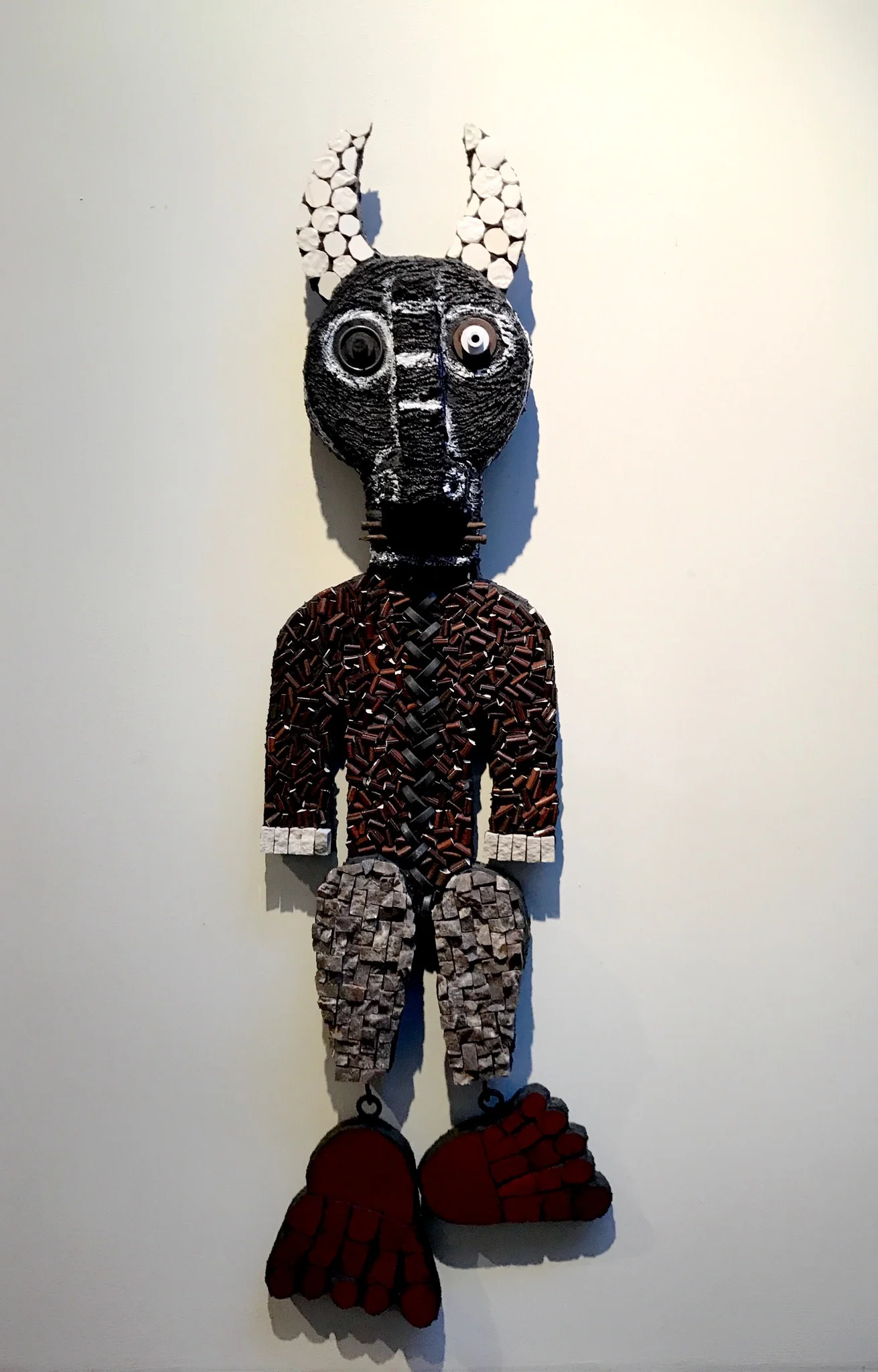Chemistry of Collaboration: A union, A binding together
Gallery of Contemporary Mosaics
In 2009 Karen Ami was the Keynote speaker at the Brisbane MAANZ symposium, Australia. During that time Karen and Pamela immediately identified an affinity for one another. They both come from a Fine Art backgrounds with majors in art history, ceramics and sculpture and now concentrate their practice in mosaic. Their joined appreciation for African Art, Fetish Objects, humor as well as the works of Paul Klee, Fernand Leger and Picasso are also the inspiration for this collaboration.
Karen Ami, Mr. Magic, Clay, Slip, Metal, Marble, Mortar on Polystyrene, 2016, 27x7x4in
Since their meeting 11 years ago, Ami and Irving’s kinship only grew in abundance. For more than a decade, both artists have focused their practice mainly using mosaic as their medium. Each trained in the late 70’s, and through the mid 80’s they created a niche presence for themselves as ceramic artists, holding similar backgrounds in art history, ceramics and sculpture.
Karen Ami is located in Chicago, USA and Pamela Irving in Melbourne, Australia. Both artists still acknowledge ceramics in their works, through its distinct use in the application of their current practices.
Irving and Ami often discussed their personal journeys and professional trajectories as artists and the influence of Primitivism and Non-Western Art in their practices. In 2015, Irving held a solo exhibition of prints and mosaics in Chicago. During that time, they discussed their shared interests, influencers and inspirations. This was the birth of their first formal collaboration. The exhibit enabled them to explore and push boundaries in each others iconography as well as break barriers in contemporary mosaics, within an American and European context. Essentially, they exchanged their impressions of specific works and begin to “riff” off each other, addressing the privacy of an artist’s studio practice in the process.
Pamela Irving, Fernand, Ceramic, Marble on a Cement Base, 2016, 26x9in
This exchange resulted in their first collaborative exhibition, “Savage Curiosities” at the Gallery of Contemporary Mosaics, Chicago, in 2016. After months of collaborative research, they each selected several African sculptures, tapestries, and masks from various collections, books and external sources. In their respective studios in Chicago and Melbourne, they began to interpret the images through the process of drawing and writing. Ami and Irving communicated across the world, using the internet to connect; establishing a procedure to regularly exchange in-process photos of their works to track progress and allow the continuing of “riffing”. This arrangement resulted in the creation of new, responsive works inspired by seeing how each had interpreted an image. It was a stimulating and connective exercise for both artists living at opposite sides of the world. The impression of working together was traced and identified. For Irving this process has toned down her usual palette of garish colors to a more muted palette and black and white. For Ami, it has been about experimenting in visual storytelling while playing with new patterns and textures.
Ami utilizes handmade ceramic pieces in her complex narratives. Her use of textured and carved ceramic slabs are drawn upon and often imbued with words and hackneyed marks. These sgraffitoed pieces are hand cut and broken to create line and texture adding another layer of narrative to her sculptural forms. Irving, on the other hand, uses found ceramics, old china, pottery, back stamps and other elements to tell her stories. The history of the unique ceramic pieces is often integral to the story being told. For both of these artists, drawing was and still is at the core of their process.
To Ami and Irving, as women and artists, the family is integral to their practices. It cannot be separated from who they are, what they see, and what they make. Both create lively works that are witty and smart and come from a place where curiosity lives. Their deep and shared respect and fondness for each other’s work is abundantly clear and a reflection of yet another collaboration at SOFA, 2019.
“Savage Liasons” describes not only the love of primitivism apparent in their works but also the methodology and experimentation of these two artists. The domino effect of their past visual exploration of raw expressionism continues this before and will, undoubtedly, be a touchstone of their individual practices.


